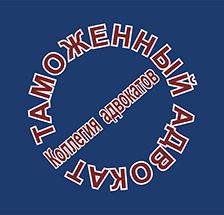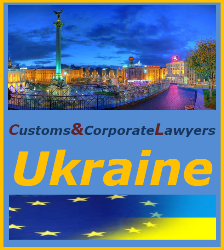Measures of tariff and non-tariff regulation in the Customs Union - what Russian exporters need to know
This analytical material prepared by the specialists of Bar association Customs & Corporate Lawyers
From 1 January 2010, actually started its functioning Customs Union of the three countries: the Republic of Belarus, Kazakhstan and the Russian Federation.
I. Customs tariff regulation in the Customs Union.
Currently, in the territory of the Customs Union and acts adopted by the Common Customs Tariff of the Customs Union, which includes a set of rates of customs duties applied to goods imported into the single customs territory of third countries, systematized in accordance with the Single Commodity Nomenclature of Foreign Trade of the Customs Union (HS TC).
Common customs tariff to be finalized and currently there is a constant negotiation of new and revision of the current rates, and the parties to consider the following factors:
1) the level of unification of customs tariffs;
2) the specific import goods into the customs territory of the Parties;
3) the sensitivity of import duties for a particular industry;
4) the international obligations of the Parties.
Common customs tariff to date not used on the entire territory of the Customs Union. For example, the Republic of Kazakhstan have the right to apply for a transitional period (until 2015), import duties, other than the Common Customs Tariff rates of customs union in accordance with the list of goods and the rates approved by the decision of the EurAsEC Interstate Council of 27.11.2009 N 18, the Decision Customs Union Commission 27.11.2009 N 130.
It should be noted that the Agreement of 25.01.2008 "On the Common Customs Tariff Regulation" provides that goods imported into the single customs territory of the Parties may be applied tariff concessions in the form of exemption from customs duty or reduced rates of customs duties.
Allowed the granting of tariff preferences in respect of goods:
imported as a foreign founder in the authorized (share) capital within the time limits set by the founding documents for the formation of capital;
imported in the framework of international cooperation among States Parties in the exploration and use of outer space, as well as service agreements spacecraft launch, on a list approved by the Commission.
From payment of import duty exempted:
Currency of the Parties, the currency of third countries (except for those used for numismatic purposes), as well as securities in accordance with the laws of the Parties;
Goods imported as humanitarian aid and (or) in order to eliminate the consequences of accidents and catastrophes, natural disasters;
Vehicles engaged in international transport of goods, luggage and passengers, and others.
We should also note used to promote economic development in developing and least developed countries, the single system of tariff preferences, which provides as follows:
in relation to goods originating from developing countries - users a unified system of tariff preferences of the customs union, the rates of import customs duties in the amount of 75 percent of the import duties of the Common Customs Tariff.
in respect of goods originating in the least developed countries - users a unified system of tariff preferences apply a zero rate of import customs duties.
Under the provisions of the Agreement of 12.12.2008 "On the terms and application of tariff quotas" in the implementation of regulation of entry to the single customs territory of agricultural products originating in third countries shall be allowed to provide benefits (preferences) in the form of the establishment of tariff quotas for imports of similar goods produced (mined, grown) in the single customs territory.
Tariff quotas and import duties for preferential import of agricultural commodities are set by the Commission of the Customs Union and customs clearance of goods imported into the single customs territory under tariff quotas carried out in the State Party in which the participants of foreign trade activity has been allocated the quota.
The list of goods in respect of which from 1 January 2011, establishes tariff quotas, as well as the volumes of tariff quotas for the importation of these goods in the territory of the Member States of the Customs Union approved the decision of the Customs Union Commission dated November 18, 2010 № 505.
Distribution of tariff quotas between third countries if the Commission so decided, as a rule, by the Commission on the basis of consultation with all significant suppliers from third countries.
Under significant suppliers from third countries understood suppliers having a share in agricultural imports to the single customs territory of 10 percent or more.
II. Special protective, antidumping and countervailing measures.
On the territory of the Customs Union on 1 July 2010 in accordance with the Decision of EurAsEC Interstate Council of 21 May 2010 № 37 Agreement entered into force on the application of special protective, antidumping and countervailing measures in relation to third countries of 25 January 2008 (hereinafter - basic Agreement).
At present, measures to protect the domestic market of the Customs Union shall apply in the mode transition period when there is a gradual revision of existing protective measures in the member states of the Customs Union in order to spread them on a single territory.
Special protective, antidumping and countervailing measures established and applied in the territory of - members of the Customs Union, subject to revision for distribution to the single customs territory of the Customs Union in accordance with the provisions of the Agreement in transition.
III. Non-tariff measures in the Customs Union.
Technical regulation.
Changes were made and non-tariff regulation. From 1 July 2010 in the Member States of the Customs Union operate on an alternative basis: national regime of technical regulation and a single regime of technical regulation.
Single regime of technical regulation envisages maintaining effective allied technical regulations, which will have a direct effect on the entire territory of the Customs Union, as well as the use of common forms of supporting documents (declaration of conformity, certificate of conformity).
Also, the Customs Union Commission 18 June 2010 adopted a Decision № 319 "On Technical Regulation in the Customs Union," which says single list of products subject to mandatory assessment (confirmation) of the Customs Union with the issuance of common documents. "This list includes products which are currently covered by a single mode of conformity to the entry into force of the Union technical regulations.
Licensing.
June 9, 2009 signed an agreement "on the introduction and application of measures affecting foreign trade in goods, the common customs territory of third countries."
This Agreement shall be approved by the Unified list of goods subject to bans or restrictions on the importation or exportation of states - participants in trade with third countries.
Following the adoption by the Commission of the Customs Union decision to impose control measures for a single type of product it is included in the Single List.
Implementation of control measures affecting foreign trade in goods, included in a single list, as well as the application of tariff quotas are implemented, as a rule, by licensing the export and (or) import of goods.
Agreement, the Government of 09.06.2009 "On the licensing rules in the field of foreign trade," defines a uniform procedure for issuing licenses and permits for export and (or) import of goods.
According to the agreement provides:
Single instruction about the design of the application for licensing and registration of a license;
Single instruction about the design of the project and permits the design of such a permit;
The common form of licenses and permits.
Issued a single, general and exceptional views of the license.
The issuance of the authorized body of general and exclusive licenses is carried out in the cases stipulated by the decision of the Commission of the Customs Union.
Issuance of license or refusal to issue it by the authorized body within 15 working days from the date of filing.
Without a license is a ground for refusal of customs clearance of goods.
When customs clearance of goods in respect of export and (or) import of which are incorporated observation (taken in order to monitor the dynamics of export and (or) import of certain goods), the applicant in addition to the documents required for customs purposes, presents to the customs authorities the original resolution.
Permits are issued without restriction to all applicants, while its absence is grounds for denial of the customs clearance of goods by customs authorities.
Sanitary measures, veterinary measures and plant quarantine.
The Customs Union is to identify a single list of goods subject to sanitary and epidemiological supervision (control) at the customs border and customs territory of the Customs Union and Common sanitary and epidemiological and hygienic requirements. Also approved and used a single form of documents confirming the safety of the product.
Similar lists of controlled goods, uniform requirements and forms of documents exist in the application of animal health measures, as well as in the field of pest control.
However, it should be noted that the list of regulated products provides for two types of products:
• With high pest risk
• Low pest risk
Must be accompanied by a phytosanitary certificate shall be subject only to regulated products with high phytosanitary risk.

